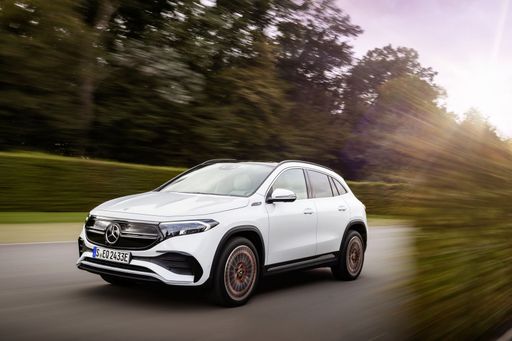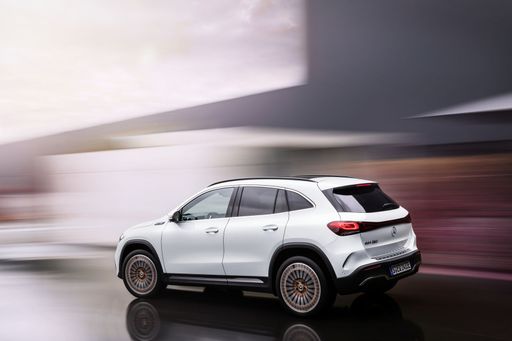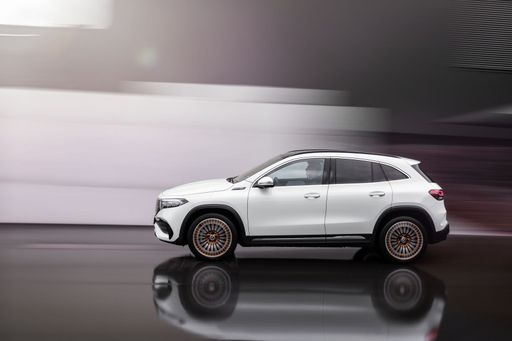Mercedes EQA vs Nissan Micra – Differences & prices compared
Two cars, one duel: Mercedes EQA meets Nissan Micra.
Which one wins in performance, efficiency and value for money? Find out now!
Costs and Efficiency:
Price and efficiency are often the first things buyers look at. Here it becomes clear which model has the long-term edge – whether at the pump, the plug, or in purchase price.
Nissan Micra has a clearly advantage in terms of price – it starts at 24000 £, while the Mercedes EQA costs 44200 £. That’s a price difference of around 20246 £.
In terms of energy consumption, the advantage goes to the Nissan Micra: with 14.20 kWh per 100 km, it’s hardly perceptible more efficient than the Mercedes EQA with 14.40 kWh. That’s a difference of about 0.20 kWh.
As for range, the Mercedes EQA performs noticeable better – achieving up to 561 km, about 145 km more than the Nissan Micra.
Engine and Performance:
Under the bonnet, it becomes clear which model is tuned for sportiness and which one takes the lead when you hit the accelerator.
When it comes to engine power, the Mercedes EQA has a convincingly edge – offering 292 HP compared to 150 HP. That’s roughly 142 HP more horsepower.
In acceleration from 0 to 100 km/h, the Mercedes EQA is distinct quicker – completing the sprint in 6 s, while the Nissan Micra takes 8 s. That’s about 2 s faster.
In terms of top speed, the Mercedes EQA performs barely noticeable better – reaching 160 km/h, while the Nissan Micra tops out at 150 km/h. The difference is around 10 km/h.
There’s also a difference in torque: Mercedes EQA pulls decisively stronger with 520 Nm compared to 245 Nm. That’s about 275 Nm difference.
Space and Everyday Use:
Whether family car or daily driver – which one offers more room, flexibility and comfort?
Both vehicles offer seating for 5 people.
In curb weight, Nissan Micra is convincingly lighter – 1452 kg compared to 2045 kg. The difference is around 593 kg.
In terms of boot space, the Mercedes EQA offers minimal more room – 340 L compared to 326 L. That’s a difference of about 14 L.
In maximum load capacity, the Mercedes EQA performs somewhat better – up to 1320 L, which is about 214 L more than the Nissan Micra.
When it comes to payload, Mercedes EQA hardly perceptible takes the win – 425 kg compared to 408 kg. That’s a difference of about 17 kg.
Who comes out on top?
Overall, the Mercedes EQA shows itself to be outperforms in nearly all aspects and secures the title of DriveDuel Champion.
It convinces with the more balanced overall package and proves to be the more versatile choice for everyday use.

Mercedes EQA
Mercedes EQA
The Mercedes-Benz EQA presents a refined blend of elegance and electric performance, perfectly suited for urban environments. Its sleek and modern design emphasises aerodynamic efficiency while providing a sumptuous interior that epitomises luxury and comfort. With advanced technology seamlessly integrated into its user-friendly interface, the EQA ensures a connected and enjoyable driving experience.
details @ group-media.mercedes-benz.com
@ group-media.mercedes-benz.com
 @ group-media.mercedes-benz.com
@ group-media.mercedes-benz.com
 @ group-media.mercedes-benz.com
@ group-media.mercedes-benz.com
 @ group-media.mercedes-benz.com
@ group-media.mercedes-benz.com
Nissan Micra
The Nissan Micra is a compact hatchback renowned for its agile handling and city-friendly dimensions. With a design that blends sleek curves with a practical layout, it appeals to urban drivers who value style and efficiency. Inside, the car offers a surprising amount of room and useful tech features, making it both a convenient and comfortable ride for daily commutes.
details

|
|
|
|
|
Costs and Consumption |
|
|---|---|
|
Price
44200 - 57400 £
|
Price
24000 - 29900 £
|
|
Consumption L/100km
-
|
Consumption L/100km
-
|
|
Consumption kWh/100km
14.4 - 16.9 kWh
|
Consumption kWh/100km
14.2 - 14.7 kWh
|
|
Electric Range
476 - 561 km
|
Electric Range
317 - 416 km
|
|
Battery Capacity
70.50 kWh
|
Battery Capacity
40 - 52 kWh
|
|
co2
0 g/km
|
co2
0 g/km
|
|
Fuel tank capacity
-
|
Fuel tank capacity
-
|
Dimensions and Body |
|
|---|---|
|
Body Type
SUV
|
Body Type
Hatchback
|
|
Seats
5
|
Seats
5
|
|
Doors
5
|
Doors
5
|
|
Curb weight
2045 - 2115 kg
|
Curb weight
1452 - 1527 kg
|
|
Trunk capacity
340 L
|
Trunk capacity
326 L
|
|
Length
4463 mm
|
Length
3974 mm
|
|
Width
1834 mm
|
Width
1774 mm
|
|
Height
1608 - 1613 mm
|
Height
1490 mm
|
|
Max trunk capacity
1320 L
|
Max trunk capacity
1106 L
|
|
Payload
425 kg
|
Payload
403 - 408 kg
|
Engine and Performance |
|
|---|---|
|
Engine Type
Electric
|
Engine Type
Electric
|
|
Transmission
Automatic
|
Transmission
Automatic
|
|
Transmission Detail
Reduction Gearbox
|
Transmission Detail
Reduction Gearbox
|
|
Drive Type
Front-Wheel Drive, All-Wheel Drive
|
Drive Type
Front-Wheel Drive
|
|
Power HP
190 - 292 HP
|
Power HP
122 - 150 HP
|
|
Acceleration 0-100km/h
6 - 8.6 s
|
Acceleration 0-100km/h
8 - 9 s
|
|
Max Speed
160 km/h
|
Max Speed
150 km/h
|
|
Torque
385 - 520 Nm
|
Torque
225 - 245 Nm
|
|
Number of Cylinders
-
|
Number of Cylinders
-
|
|
Power kW
140 - 215 kW
|
Power kW
90 - 110 kW
|
|
Engine capacity
-
|
Engine capacity
-
|
General |
|
|---|---|
|
Model Year
2024 - 2025
|
Model Year
2026
|
|
CO2 Efficiency Class
A
|
CO2 Efficiency Class
A
|
|
Brand
Mercedes-Benz
|
Brand
Nissan
|
Is the Mercedes EQA offered with different drivetrains?
Available configurations include Front-Wheel Drive or All-Wheel Drive.
The prices and data displayed are estimates based on German list prices and may vary by country. This information is not legally binding.
